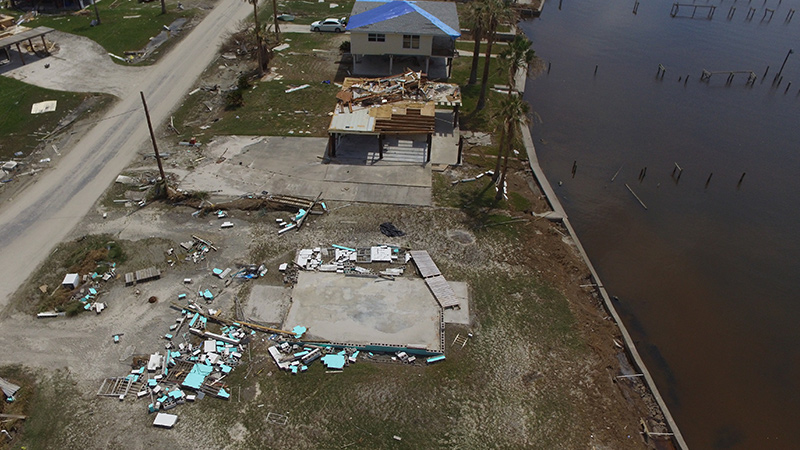Stay Up to Date
Submit your email address to receive the latest industry and Aerospace America news.
The Guidance, Navigation and Control Technical Committee advances techniques, devices and systems for guiding and commanding flight vehicles.
The guidance, navigation and control field had an eventful year, covering all aspects of aerospace engineering.
In August and September, unmanned aerial systems recorded images of the damage and the state of infrastructure in Texas in the aftermath of Hurricane Harvey. The Texas A&M University, Corpus Christi, drone team worked with local authorities and with the FAA’s permission to fly UAS over areas affected by the hurricane. Privately owned drones pose risks to military and civilian assets during rescue efforts when users violate FAA-issued temporary flight restrictions. Since June 2016, all small-drone users had been required to register their UAS. However, that changed in May when a federal court ruled some hobbyists didn’t need to register their drones.
In January, NASA signed an agreement to transition UAS Traffic Management research to the FAA in 2020. NASA has been working on the UTM concept since 2014.
The past year has also been eventful for launch vehicles. The guidance, navigation and control systems on SpaceX vehicles enabled the reuse of a Falcon 9 booster in March and a Dragon spacecraft in June — firsts for both systems. SpaceX also reused Falcon 9 boosters in June and October. On the small launch vehicle side, California-based Rocket Labs demonstrated its low-cost guidance, navigation and control systems with its Electron launch vehicle’s flight to space in May. Those systems performed nominally, until a ground system fault resulted in flight termination. In June, India launched its Geosynchronous Launch Vehicle Mark III rocket, capable of taking 4 tons to geostationary transfer orbit. On the heavy side, in March, Blue Origin announced the development of its reusable New Glenn rocket.
Development of next-generation systems continued worldwide. United Launch Alliance tweeted about progress on the Vulcan rocket. The European Space Agency in July reported progress toward a requirements review in 2018 for the Ariane 6 rocket. The U.S. military awarded Boeing a contract in May for its Phantom Express spaceplane. And in September, Elon Musk gave an update on SpaceX’s Interplanetary Transport System design at the International Astronautical Federation.
Several systems met milestones in 2017. The Interim Cryogenic Propulsion Stage for NASA’s Space Launch System was delivered to NASA’s Space Station Processing Facility at the Kennedy Space Center in July. Lockheed Martin powered up the Orion spacecraft for the first time Aug. 22 at Kennedy.
An era ended as Russia retired the Soyuz-U launch vehicle in February after more than 785 missions. On Sept. 15, NASA’s Cassini plunged into Saturn’s atmosphere, with the guidance, navigation and control system keeping the antenna pointed toward Earth. Launched 20 years ago, Cassini had orbited Saturn more than 290 times.
Finally, NASA’s Langley Research Center celebrated its 100th anniversary July 17. Langley has long been at the forefront of aircraft control systems, and the U.S. space program was born there. Stabilization, guidance and control systems considerations led to the now-famous shuttlecock-shaped design for the first U.S. space capsules. Early concepts for the space shuttle were designed and tested at Langley. The center is also home to NASA’s Engineering and Safety Center, which investigates engineering aspects of all aerospace failures. In September, Langley opened the Katherine G. Johnson Computational Research Facility, named in honor of the black female mathematician who, among other accomplishments, calculated astronaut Alan Shepard’s flight trajectory in 1961. She was also one of the subjects of the book and film “Hidden Figures.”
Related Posts
Stay Up to Date
Submit your email address to receive the latest industry and Aerospace America news.




